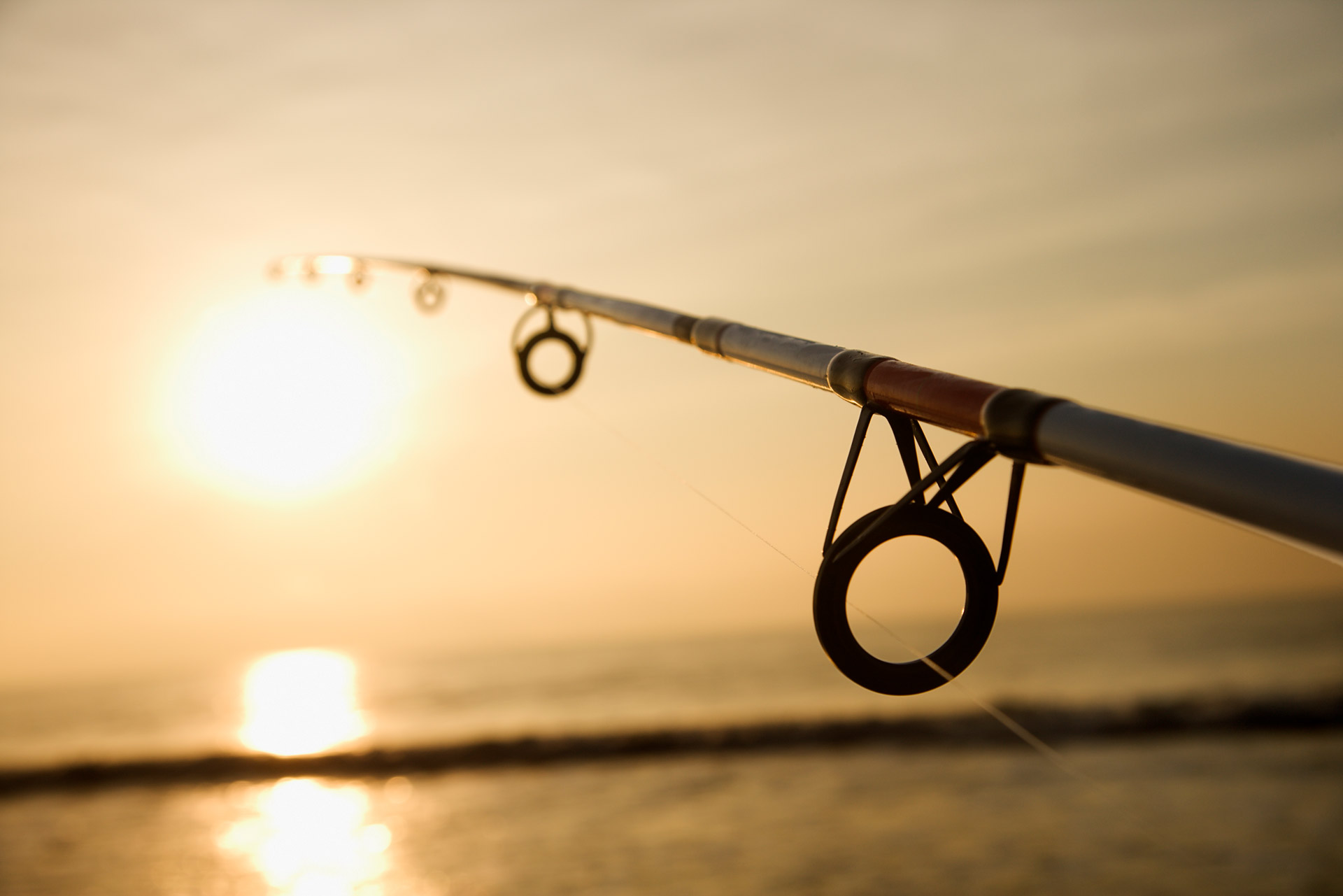Winter Smallmouth Fishing: How to Keep Catching in the Hardest Season
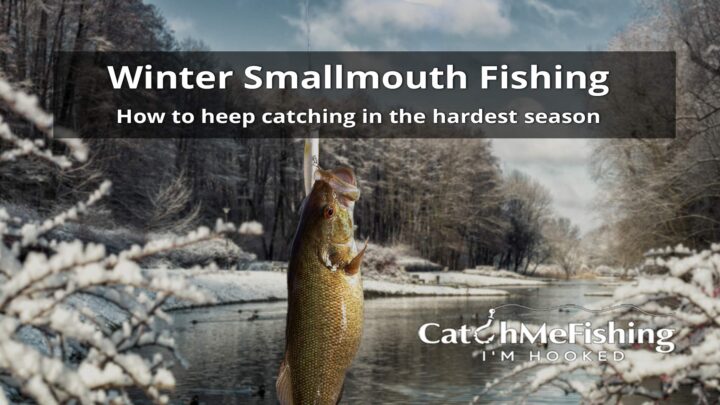
If you're like me, the long winter months make for a tough time to stay motivated. The weather is horrible, you're not getting outside much, and the fishing isn't great. However, I've found that you can still get some quality time on the water, even during these months. You need to adapt your techniques a bit.
Some of you might think you need to travel south to find decent fishing during the winter, but you don't have.
I've found that there are still some excellent winter fishing opportunities, and it is possible to succeed even when other fish species seem scarce.
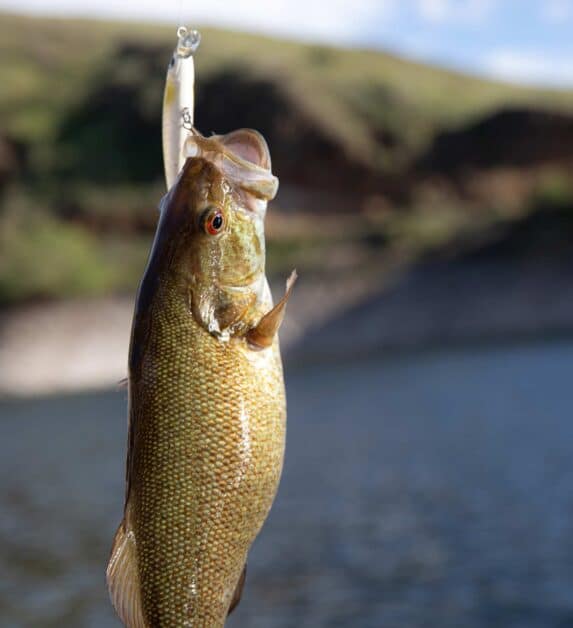
You can catch smallmouth all year, even in the colder months. I've caught smallmouth in February, including two days last winter when the temperature was 36F.
When the temperatures start to dip, and the leaves fall, I am excited to know that winter smallmouth fishing season is just around the corner. The key to catching these fish during this time of year can adjust your technique for colder water.
Can you catch smallmouth bass in the winter?
Yes, you can catch smallies all year round. However, you need to adjust your technique for the colder water.
Bass are a species that have been extremely over-fished in many sections of the US. This is due to their preference for shallow water and tolerance to poor water conditions. In most lakes, smallmouth bass will not venture out into deep holes during harsh weather months.
Like other sun-loving species, such as winter largemouth bass, smallmouth will take advantage of any sunlight in the winter months.
Finding Winter Smallmouth Bass
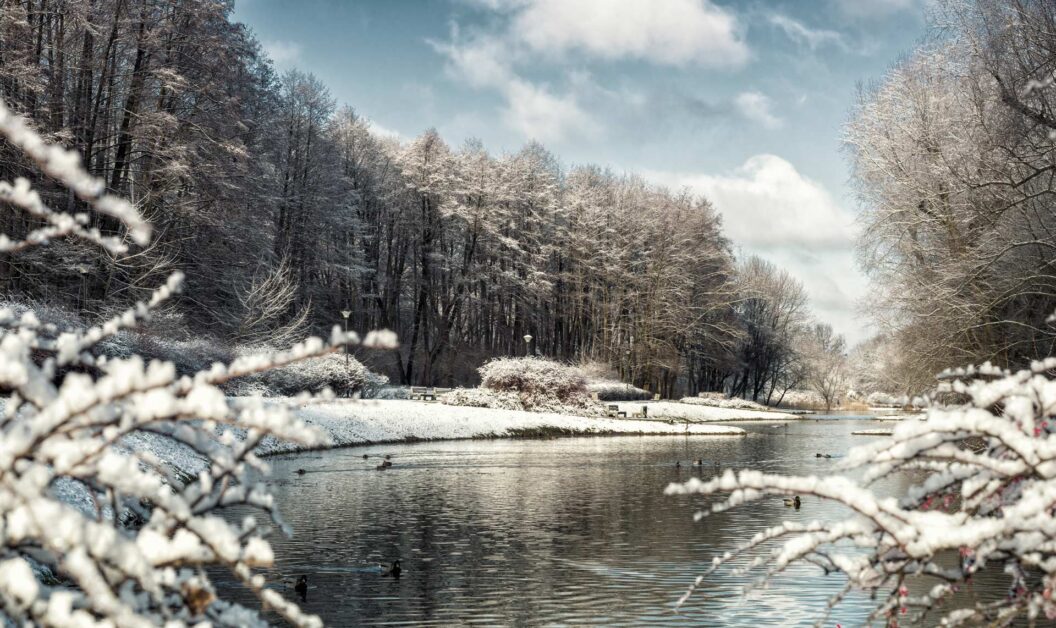
Smallmouth bass generally will be in much deeper water in the winter. But they also want access to shallower water to hunt their prey and get an easy meal.
For good winter bass fishing, shallow areas close to deep-water access and sunny days are vital. In other words, smallmouth bass in winter prefer to gorge themselves on food close to their winter haunts in deep water and feed into the early afternoon, when sunlight penetration is most intense.
Try to find warmer water, typically deeper in the colder parts of the day and shallower in the warmer parts of the day.
The four most common places I catch fish in the winter are:
- Points are where the shoreline protrudes into the water. Bass naturally occupy these areas since they provide access to deeper water and become excellent ambush points for any prey vessel passing by.
- Ledges and deep drop-offs are places where the depth abruptly changes. Usually, I look for a change of at least one foot in depth.
- Rocky areas and boulders, especially those that stick up in deeper water, will provide good cover for smallmouth. They like to hang out around these rocks and can readily find food among them. These areas are typically heavily weighted with the larger fish since this is where they go to when they need to bulk up on food before the spawn and during the winter months.
- Raised areas near deep water are often good places to find smallmouth. They will hang around the edges of the drop-off, especially in winter.
Finding Smallmouth in a River
If you're on a river, look for deep holes that cut through the main current. The deeper these holes are, the better your chances will be of finding the fish.
During the hottest time of the day, find some sun traps areas. The bass will likely be in the shallows while the temperatures have heated up, hunting for their food.
Finding Smallmouth in a Lake
Look for points that jut into the water if you're out on a lake. These areas will be in deep water and usually have gravel or rocky bottom. Shallow flats near these rocks can also have decent winter smallmouth fishing.
Smallies will be close to the shore when they feed, so look for deep holes and drop-offs that reside close to the shallow shore. Baitfish and insects that smallmouth prey on will gather around the shore where the oxygen is high from run-offs from the banks.
Choosing the Right Depth
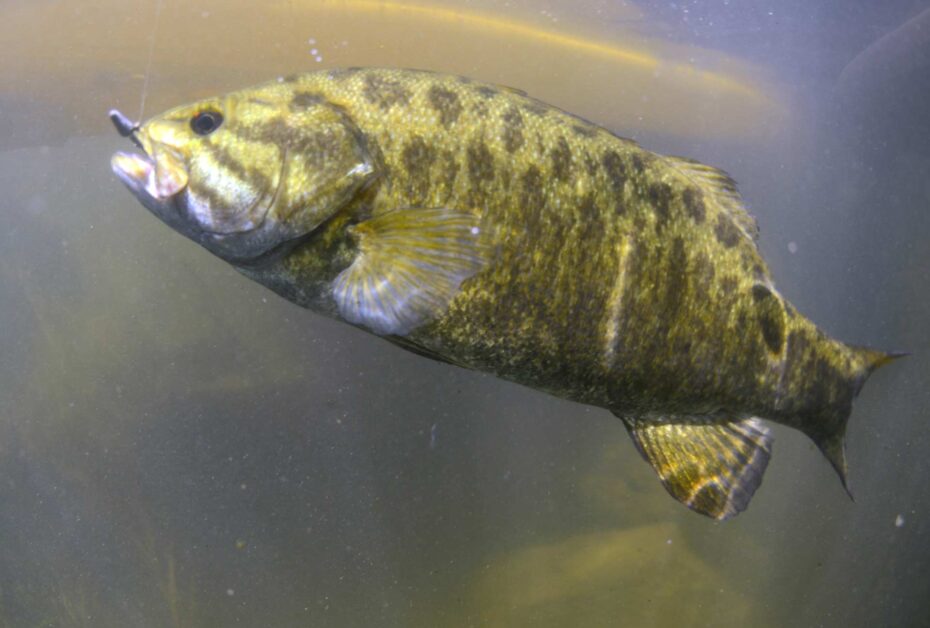
Smallmouth bass will generally hold in deeper water during the winter months. Therefore, during this time of year, they are likely to stay out of the shallows, where it is much colder. However, there is an exception to this rule. Smallies will move there to feed when the shallows have warmed up in the hotter parts of the day.
I always have the most success when I fish in the deep areas close to slopes or drop-offs. So target the deep pools near those areas if you fish the water all year and know where the spawning areas are.
Also, look for baitfish and other things the bass feed on. The smallmouth won't be far behind.
Prepare Well
Winter environments can be harsh and unforgiving. As a result, it is important to dress warmly and prepare well before heading out on your smallmouth winter fishing adventure. The last thing you want to do is go fishing in the cold unprepared.
What you wear is just as important as what tackle you will use. Dress warmly but in layers. This way, you can adjust to the temperature changes in smallmouth bass fishing.
I dress in layers, with a base layer of thermal underwear followed by a fleece long-sleeve shirt and topped by my waterproof coat.
Clothing for Smallmouth Bass Winter Fishing
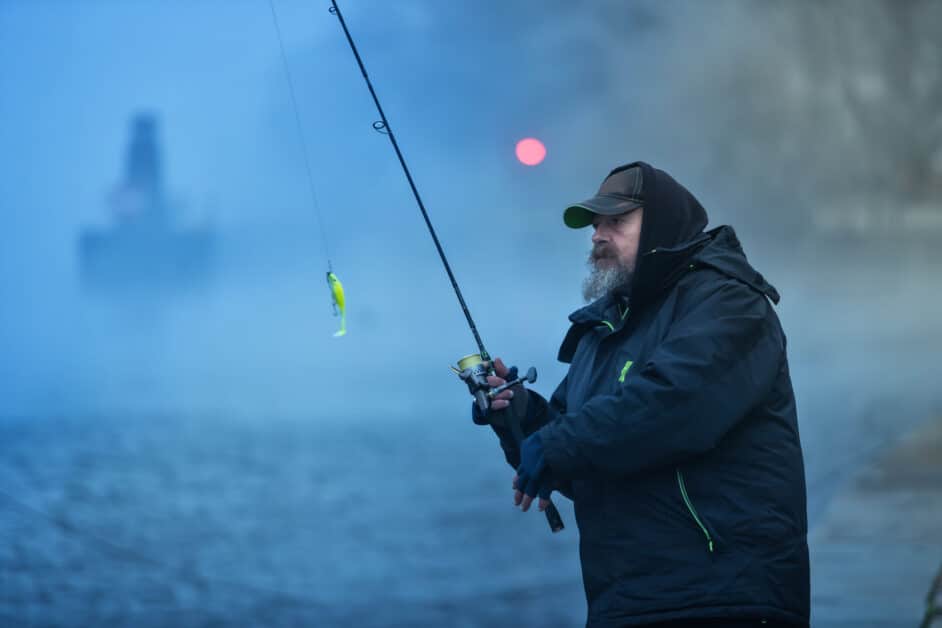
Layering is an excellent way to stay ahead of winter weather forecasts, especially when you layer multiple layers. Thermal base layers are a great choice and can be worn over other clothes to create layers.
Here's a list of clothing I wear and recommend to keep you warm during your smallmouth winter fishing trip:
- Thermal underwear is the first layer to keep your body warm. I then layer over this to ensure I have the most warmth possible.
- A thick sweater or sweatshirt with a hood is something that will keep you warm in icy conditions. I keep one in my smallmouth bass fishing kit in my car all year round in case I ever hit bad weather and need to add the extra warmth.
- Waterproof Fleece Lined Pants. I use a pair of insulated pants that are very warm, and the waterproof outer layer keeps me dry too.
- A waterproof jacket keeps you warm, dry and protected from the elements. I use the HUK wind & waterproof rain jacket and has protected me from a good downpour on many occasions.
- Insulated Waterproof Boots with a good grip for slippery conditions. I have two pairs of boots I use for different conditions. I have a boot for extremely cold temperatures and a boot for cold but not freezing. I'll choose depending on the weather forecast and where I fish.
- Thermal Waterproof Gloves keep your hands warm and protected from wind, rain, and snow. You don't want cold, wet hands when trying to fish. It makes your life so miserable. Investing in a quality pair of gloves is essential to avoid this.
- You can use a Neck Gator or Scarf to block the chilly winter wind from entering your clothes around your neck. You may also pull them over your mouth and nose to keep your face warm against the cold air temperature.
Plan for the Weather
When temperatures are in the forties and lows are in the forties, four days in a row is the perfect time to go fishing in winter. As a result, you can fish during the day and take advantage of the extra warmth at night. It isn't uncommon for these stretches to happen early in January, which is the best part about this stretch!
Also, be prepared to fish for smallmouth bass under the worst possible conditions during winter. Put on layers of waterproof clothing and a warm hat, stocking cap, and gloves.
Safety Equipment
It's crucial to stay safe in these cold conditions. Preparing and carrying the right equipment will make your winter fishing adventure more enjoyable and safe.
I always pack a fully charged cell phone in case of emergencies. This way, you can call for help if needed. Just remember to inform your family beforehand which lake you'll be fishing so they can quickly get in touch with authorities if needed.
The list of things I take when smallmouth bass fishing in the winter:
- Mobile phone with its battery fully charged.
- Headlamp to help navigate when it gets dark.
- Waterproof handheld GPS device to help find your way back.
- A Signal whistle to help signal if I'm in trouble. I carry one of these on me, so it's always within reach, just in case.
- Lighter to help start a fire if needed. A good rule of thumb is to keep the lighter on you wrapped in a bag to prevent it from getting wet.
- A fully charged portable power pack for your mobile charger. So you can charge up your phone on the go. It's handy when out fishing all day.
- Life Jacket or Personal Floatation Device to keep you safe in the water. Also, keeping one in your smallmouth fishing boat will always be available.
- Dry bag or sack To store a change of clothes and keep essential supplies dry such as car keys, wallets, money, etc.
- Extra food and drinks in case you get stuck out in bad weather. Food keeps your body warm, so it's a good thing to have when fishing for extended periods.
- A drysuit is optional and more so for the people that are winter kayak fishing or on a boat. But if you risk falling into the water, I highly recommend purchasing a good dry suit.
- A first aid kit can be handy if you or someone else gets hurt. I recommend taking the kit with you on every fishing trip. You'll never know when you will need it.
- Handwarmers are a plus for winter fishing. Just slip them in your gloves, and they'll provide much-needed heat to keep your hands from getting cold. The hand warmers I use can also be used around the body and work well when slipped into your socks.
Smallmouth Bass Winter Fishing Tactics
The best way to lure a fish is to place the offering just off the bottom and allow the current to attract the fish. The hook needs to be on the bottom, stationary, and should not move more than a few times per minute.
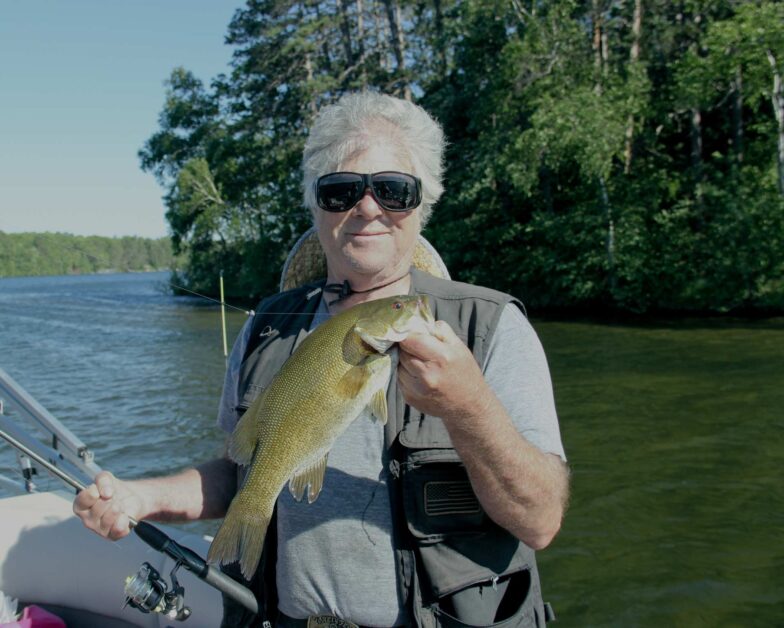
Slow it Down
Smallmouth bass are much more sluggish and finicky in the winter months. Therefore, I find it best to take it slow and enjoy the fishing trip.
When the fish bites, it is crucial to have patience and wait until it swallows the bait before lifting it out of the water. Fishing in winter requires waiting for the right time to strike. Slow down, and the fish will bite.
Winter Smallmouth Baits
During the cold months, you need to adjust your fishing technique and find out what the fish are feeding on. The lack of vegetation in winter can make it difficult for you to get a bite, so you need to change up your baits and winter bass lures and be prepared to work harder than usual for them.
Downsize Your Presentation
Every fisherman has experienced catching that one big fish but then missing it. It's an incredibly frustrating experience because you are swinging on your line, waiting for something unique to happen when there is nothing - no sound or movement at all!
Smallmouth bass spooks easily in the winter, and big baits will intimidate them. Instead, try presenting a smaller lure to increase your bite and strike rates.
Lure Selection
You do not need to worry about being too flashy with your lures in winter because the fish are less responsive than in warmer weather.
It would help if you had lures that could penetrate deep into the water. If you're looking for depth, use jigging spoons. Use black or silver spoons with dark or light blades if you catch bass in winter's cold water.
Use live bait-like minnows if smallmouth are still feeding aggressively on baitfish. Then, you can put them on a slip bobber rig.
Jigging
Jigging with a 3/4 ounce nickel hammered spoon is highly productive during the wintertime for smallmouth bass. When jigging, keep scanning your graph for bass following the lure. This method is very good if targeting redeye bass.
After the spoon reaches the bottom, lift the rod tip to move it from about 1 foot to 18 inches off the bottom. If the bass aren't interested in it, use a drop-shot rig with a 4-inch finesse worm and keep it motionless on the bottom. I like to pair this with a weedless texas rig to give excellent control and finesse.
Tube Bait
As all smallmouth bass fishermen know, winter is the most challenging time of year. The water temperature has dropped below 40 degrees, and your fishing options have narrowed substantially with it. You've got to consider lure selection, and I love to use a 3.5-inch tube with a 1/8-ounce insert head.
Usually, my lure color selection is limited to two choices: green pumpkin with black fleck or watermelon with red fleck. If the water level in a river is particularly low due to the current being lighter than average, you'll want to drop down to a 1/16-ounce head so your tube slides over the bottom without getting hung up on every rock along the way.
Flys
When you fly fish for bass in the winter, ensure the hook isn't stuck on the bottom structure by ensuring the hook point rides the tube upwards. You can ensure the hook's point is flat on the surface. In addition, you can help prevent hooking by placing strips of lead-free wire on top of the hook shank.
Getting your fly onto the bottom is your main aim when fly fishing in the winter.
Other Baits
One of the best ways to get that target bite is with bottom-bouncing baits. These jiggy profiles are designed for slow-moving water conditions and will be your ticket when it's below freezing-outside!
Slow-rolling a spinnerbait is also an excellent technique for catching smallmouth in the winter. The blade slowly pulls back or rolls to one side in tight spaces. Smallmouths can easily grab the bait because of the slow movement.
Winter smallmouth Gear and Tackle
By using lighter gear, you will catch more fish. Smallmouth bass aren't typically a smash-and-grab type of fish, but they make subtle bait and fly takes. For this reason, sensitive rods are helpful. These rods give a subtle signal when a smallmouth takes the bait or fly, which helps the angler see the tiny bite. At the same time, these lightweight rods are easier to cast and don't weigh as much as heavier lines.
A 7-foot, medium-fast action rod is the perfect choice for this outing. It has to be sensitive enough to detect even light wires and forgiving with its tip section not to break them under pressure!
I like to fish in the wintertime with spinning tackle, but I've also had success on a finesse baitcasting setup.
For the fishing line, I prefer a braid-to-leader system consisting of a 10-15 pound mainline with an 8-pound test fluorocarbon tag end. Straight fluoro or short mono may also be effective in some cases though they are not my first choice for this technique.
Fishing techniques can vary greatly depending on what you're trying to catch, so ensure that your equipment matches up accordingly!
The correct setup gives me the confidence to know that I'm presenting the bait to the fish in the best way possible.
Final thoughts
Winter smallmouth fishing can indeed be a challenge for many anglers. This is due to a decrease in water temperature, which changes the type of lures that are effective and how you should fish them. If you're trying to catch bass this time of year, make sure your tackle matches the conditions and consider using lighter gear to increase sensitivity when detecting subtle bites.
The key is to choose the right gear and bait. You will not go wrong if you target the bass at the bottom of the water.
If you follow this article I have put together, I'm sure you will enjoy fishing for the smallies in winter, just like I do.
Check out my smallmouth bass fishing tips article if you're new to fishing for smallies.
Have a great and safe fishing trip this winter!



